The peacock is among the most exquisite and fascinating birds in the world. Although its long, multicolored, dress-like feathers are what most people associate with this amazing bird, they also have other fascinating features. As a matter of fact, peacocks are among the most varied bird species found on our wonderful planet! There are three subspecies of these birds, which vary in size and color. Each is immensely distinctive in a different manner. Let’s discover even more amazing details about these magnificent animals.
Facts about Peacocks
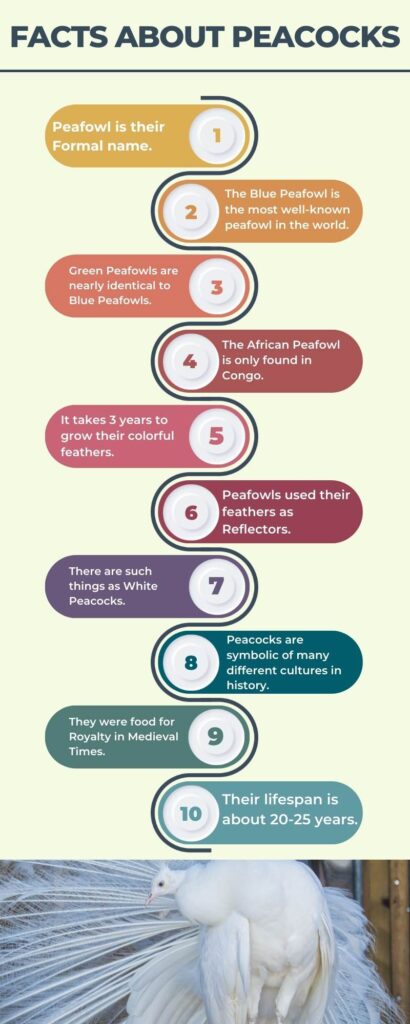
1. Peafowl is Their Formal Name
These large, feathered birds are officially known as peafowls, even though the term “peacock” is the one that people hear the most. A huge crested pheasant originally to Asia, the term “peafowl” refers to the pheasants that currently inhabit the Congo. In actuality, this species’ males are the only ones called peacocks. Baby peafowls are called peachicks, while females are referred to as peahens.
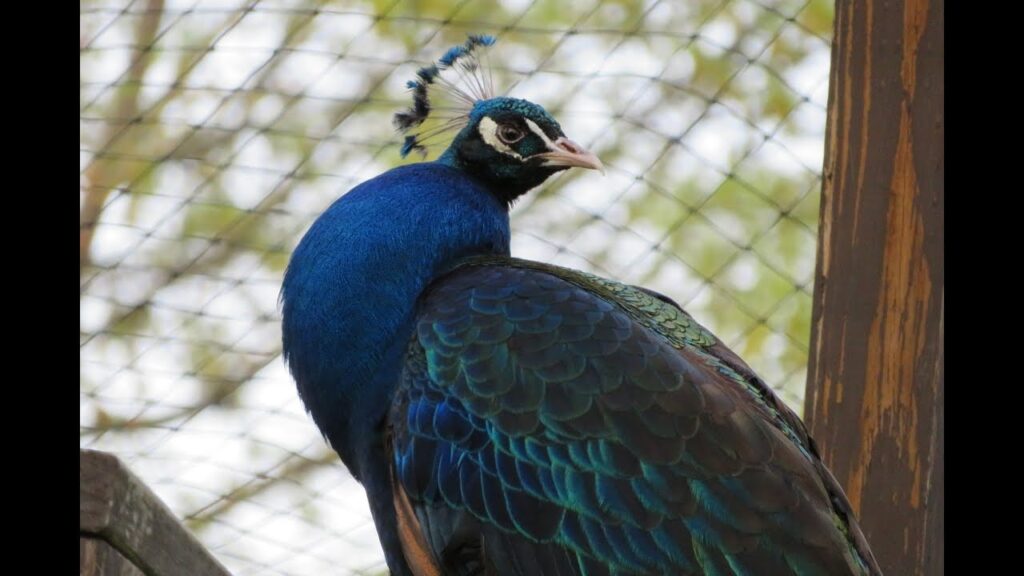
Peafowls in a group are sometimes referred to as a bevy or muster. The term “peacock” has come to refer to these big terrestrial birds with ease throughout time. Even though males tend to have longer and more elaborate feathers than females, it’s only a categorization for males.
2. The Most Famous Peafowl in the World is the Blue Peacock
The first thing that often springs to mind when people think of peacocks is usually the enormous blue bird with spectacular green and blue plumage. Because it lives in both India and Sri Lanka, it is known as the Indian peacock. Its huge feathers, when extended, can measure five feet wide. Its blue breast is substantial and magnificent.

These are among the biggest and most stunning flying birds that humans have ever seen. When their feathers spread out, they exhibit a vivid display of brown feathers with green circles, which are typically speckled with vivid blue centers. Despite being the species’ more prevalent hues, light reflection frequently causes them to shift. This species’ females are different; they often have duller, less vibrant colors than the males. This makes differentiating them really simple.
3. There Is Minimal Difference Between Green And Blue Peafowls
Southeast Asian countries like Indonesia are home to green peafowls. They resemble blue peafowls in appearance and are closely related to them. But instead of being blue, their chests are green! When their wings are completely extended, they exhibit many colors of vivid green and have a little blue head. Compared to blue peafowls, these birds are typically larger and have longer legs.

It’s simple to distinguish between a green peafowl when its wings aren’t spread. This is because their feathers typically trailed behind them, resembling a dress train. Compared to their subspecies, these birds usually have a little more color, with yellow on both the face and the wings.
4. The African Peafowl is Only Found in The Congo
The African peafowl is as gorgeous as other species, although having fewer spots than them. Only the Congo is home to this species. It was identified as the national bird of the Congo many years ago, having been found in the country’s jungles in 1936. But before this species was discovered, a protracted search was conducted.
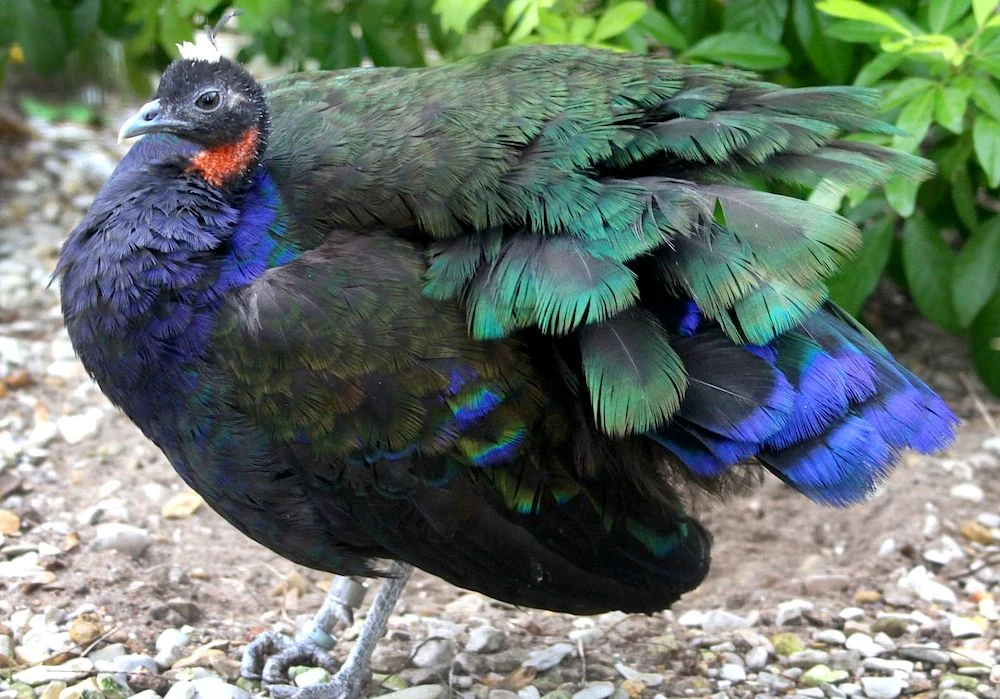
One of these pheasants’ solitary feathers was discovered in 1913, sparking a 23-year search for the stunning bird. Despite being considerably darker than other species, these birds have incredibly vivid blue tones. When they stroll through the rainforest, their spread wings sometimes give them the appearance of a vibrant little shrub.
5. It takes 3 years to grow their colorful feathers.
Peafowls have less color in their juvenile form than in their mature form. This is due to the fact that the development of their vibrant feathers takes a long period. As a matter of fact, a peacock’s feathers don’t exhibit hues as vivid for almost three years.

This is due to the fact that they emerge once they have attained sexual maturity and that their feathers frequently facilitate mating. Since pea “hens” are known to be picky when it comes to mating selection, the enhanced display for the vibrant male will frequently help with this battle. Peacocks frequently lose their train after mating season and regrow it in a year. Perfect timing for the next mating season!
6. Peafowls used their feathers as Reflectors
It is well known that peacocks frequently mate with their vibrant feathers. They do, nonetheless, also serve as light reflectors. Each year as their feathers expand, pigment particles become implanted in them. They are able to reflect and absorb light as a result.

But pigment isn’t the only source of these feathers’ hues. Instead, it’s a blend of photonic crystals and pigment! When the wings are completely extended, this combination provides for a tremendously vivid show that creates patterns on the feathers themselves. When the feathers are on show, they resemble several pairs of eyes, which deters potential predators.
7. There Are Completely White Peacocks
The white peacock is one of the rarest varieties of the bird. These birds are officially recognized as a genetic variation of the blue peacock, even though they are not albinos. Animals suffering from a range of disorders known as leucism, or pigment loss, have this genetic mutation.
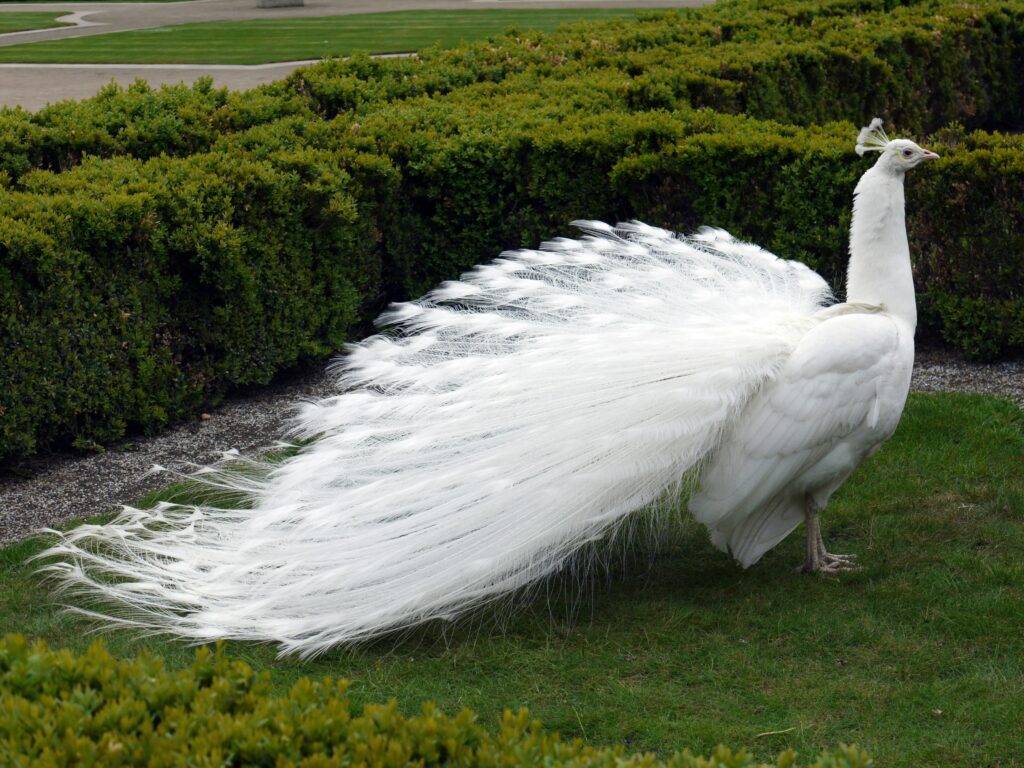
White peacocks are usually yellow at birth, but they eventually turn entirely white. This applies to their feathers as well as their crests. Although they are primarily kept in captivity, India’s rare varieties of white peacocks can also be spotted roaming free.
8. Throughout History, Peacocks have been Symbolic to a Wide Range of Cultures
The peacock and its magnificent plumage have been deemed significant in several civilizations. Despite being the national bird of the Democratic Republic of the Congo and India, they are also purportedly a Greek mythological emblem of immortality.
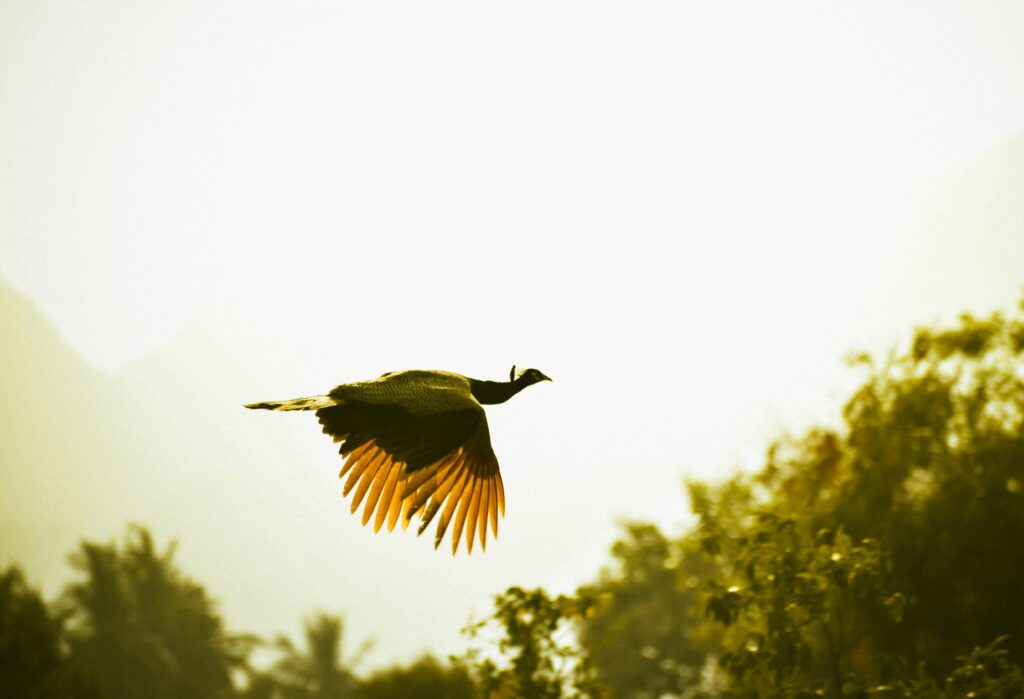
Furthermore, it is stated that the golden peacock is a sign of inventiveness in Jewish culture. They were associated with the Tree of Life in Persia, and the paintings of the feathers that resembled eyes were thought to represent the all-seeing God in early Christian mosaics.
9. They Were Medieval Times Royalty Food
These birds were considered a delicacy by high-class people many years ago. In the Middle Ages, they were frequently presented on tables to showcase the wealth of the most affluent individuals. To prepare the bird for cooking, they would pluck its feathers.

But often, they would reconnect their skin for a spectacular show when they were eventually placed on the tables for a feast. It was reported to taste rough and flavorless, not at all like chicken or turkey. The majority of rich people did not enjoy it.
10. They Live About 20 Years on Average
The average lifespan of a wild peacock is about 20 years, while certain species can live up to 25 years. In the wild, Indian peacocks may live anywhere from 10 to 20 years on average. Nonetheless, some animals kept in captivity frequently live to be 50 years old.
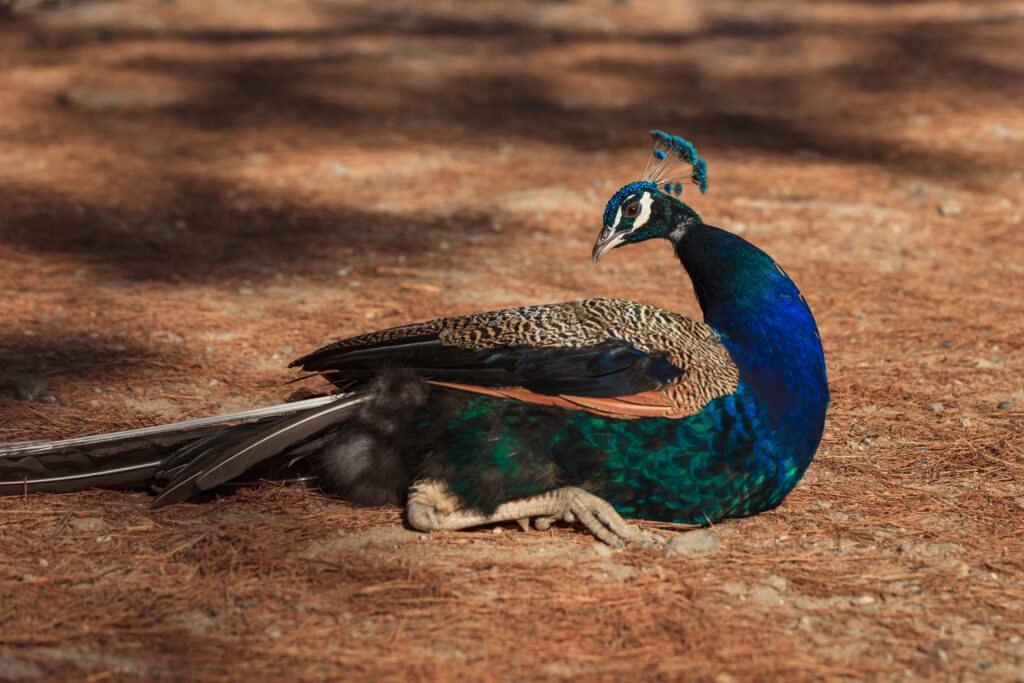
They will frequently survive longer in the wild if they are in a better environment with better availability to food. But occasionally, they may have a lot of featherweight, which makes it more difficult for them to flee from approaching predators.
